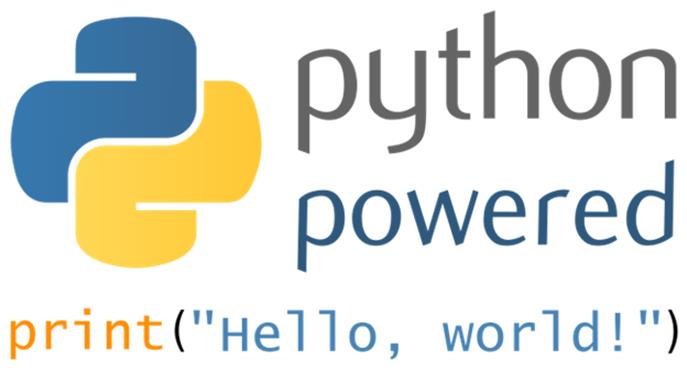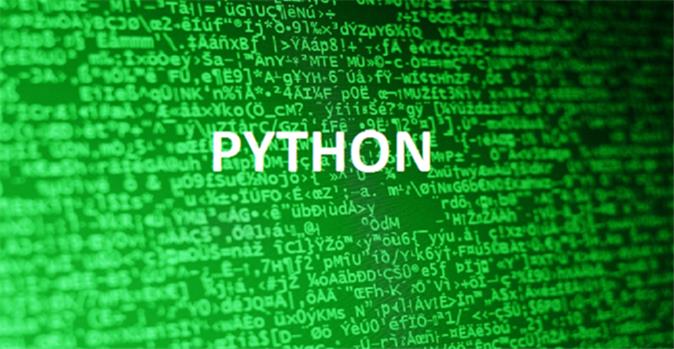8 Reasons You Should Be Using Python
By Alex Carter on October 8, 2024
Python is well-known for its flexible syntax, many real-world applications, and ease of usage. Web development, automation, data analysis, artificial intelligence, and other domains frequently use it. Its features satisfy the needs of seasoned developers, yet its simplicity makes it usable by novices. Python remains a viable choice for a variety of development jobs because of its sizable user base and plenty of helpful libraries.

What is Python?
Python is a popular programming language that is renowned for being easy to use and adaptable. Data analysis, work automation, and online and software development are among its frequent uses. Because Python is a general-purpose language, it may be used for many different types of work rather than just one. Its adaptability and simplicity of use are what make it appealing to both beginners and professionals. A Statista report ranks Python as the third most popular programming language among developers globally.
To learn more about what makes it so widely adopted, check out Why is Python so popular for a closer look at the key reasons behind its global use.
What Makes Python a Useful Tool for Developers
According to Stack Overflow, about 65% of developers used Python in the past year and plan to keep using it. Around 40% are also interested in trying it. Here’s why Python continues to attract developers:
Simple Syntax and Modern Features
Python syntax is renowned for being understandable and straightforward. By assisting developers with creating more understandable and manageable code and cutting down on debugging time, it accelerates development. The beneficial features of the language, like as generators, decorators, list comprehensions, ranges, and string interpolation, were designed with performance and memory utilization in mind.
Rich Standard Library
Numerous modules in Python’s extensive standard library are ready for use in a wide range of applications. Writing custom code from scratch takes less time. The built-in modules are simple to use due to the well-structured documentation and clear examples.
Support for Object-Oriented Programming
Multiple inheritance, abstract classes, and protocols are among the aspects of object-oriented programming that Python provides. Developers may create scalable and well-organized apps with the aid of these technologies. Unlike languages such as Ruby, Python also benefits from optional static analysis through type hints.
Functional Programming Tools
Python includes features from functional programming. For example, dataclasses make it easy to define data containers with minimal code. They also automatically add methods for comparison and hashing, which are helpful when handling structured data.
Useful for Layered Architectures
Python works well with Data Transfer Objects (DTOs) in layered application design, which help transmit data across system components. Data classes make it easier to create DTOs and handle data in multi-layered systems.
Cross-Platform Compatibility
All of the main operating systems, including Windows, macOS, and Linux, are compatible with Python. It is also utilized in smaller devices for IoT applications and may function in browser-based settings. Python programs may be bundled using Docker for testing and deployment on many platforms.
Reliable Development Tools
Python is compatible with many different software development tools. These consist of code analysis tools, linters, and testing frameworks. Many are designed to integrate with continuous integration and deployment pipelines, helping maintain code quality.
Plenty of Libraries to Work With
Python includes libraries for almost everything—web development, cloud services, messaging systems, and more. Google, Microsoft, and Amazon all utilize it on a daily basis, and it helps maintain many of their libraries up to date and dependable.
Limitations of Python You Should Be Aware Of
Python has limitations while being commended for its ease of use and adaptability. Developers can make better choices if they are aware of its restrictions, particularly in situations when concurrency, memory utilization, or speed are crucial.
Slower Runtime Performance
Unlike compiled languages like C, Go, or Rust, Python is an interpreted language that runs code line by line. Performance usually suffers as a result of this. For most online applications, this is not an issue, but for real-time systems or computation-intensive jobs, it may be a bottleneck.
In web development, Python’s speed is typically sufficient. For parts of an application that demand high performance, teams often complement Python with faster languages or specialized technologies.
Higher Memory Consumption
Python’s memory management is less efficient than that of low-level languages like C or Rust, which allow for human control over memory allocation. Despite its ability to hide this complexity, which makes development easier, Python uses more memory.
Strict models like ownership and borrowing are used by languages like Rust to address memory safety; these models greatly lower mistakes but increase the learning curve. In contrast, Python opts for simplicity so that developers may focus on building functionality instead of worrying about memory leaks or allocation issues.
Limitations with Multi-Threading (GIL)
Python uses a Global Interpreter Lock (GIL) to stop multiple threads from running Python bytecode in the same process at the same time. Python is therefore less effective for jobs requiring a lot of CPU time and several threads.
The multiprocessing module, which enables distinct processes to operate on several CPU cores, is frequently used by developers seeking genuine parallelism. However, because of inter-process communication, this increases complexity. The use of sub-interpreters, each with their own GIL, is a growing approach, although it is still in the experimental stage. Many people are optimistic that it will soon evolve into a useful feature that is easy for developers to use.

Popular Uses of Python in Modern Development
Python is one of the most versatile programming languages used today. It’s widely applied in web development, automation, finance, AI, and more. Here are some of the most common ways Python is used:
Web and Software Development
Python’s robust frameworks and easy-to-read syntax make it a popular choice for developing websites and applications. Development is accelerated by tools like Django and Flask, which manage duties like user login and database access. Python is used by several popular platforms to build scalable, quick back-end systems.
Task Automation and Scripting
Python is an excellent tool for automating repetitive processes, such as emailing, renaming files, and web data scraping. It has third-party tools and helpful built-in modules that make scripting easy. It’s also a great option for automating software testing with frameworks like Robot Framework or Pytest.
Artificial Intelligence (AI) Applications
Python is heavily used in AI development. With libraries like PyTorch and TensorFlow, developers can build and train smart systems that learn and improve over time. Its ease of use and broad support make it a preferred language for AI research and production.
Machine Learning and Data Science
Python is the optimal choice for machine learning and data research. With its easy syntax and handy tools such as Pandas, NumPy, and Matplotlib, users may analyze data, create visualizations, and build prediction models. It is widely used to develop systems that improve over time through data-driven learning.
Real-Life Examples of How Companies Use Python
Python is used by many large companies, including Reddit, Uber, Stripe, Dropbox, Netflix, and Google. Its flexibility and simple syntax make it popular among both startups and large corporations. Some well-known businesses utilize it in the following ways in their daily operations:
- Dropbox: Dropbox relies on Python to run its apps across different platforms. The language played a key role in the company’s early growth and still powers much of its code today;
- Google: Google uses Python for a wide range of tasks, from search algorithms to YouTube data processing. It’s also heavily used in the company’s AI and machine learning projects;
- Reddit: Reddit moved from Lisp to Python to handle growing traffic more efficiently. Today, its backend is built entirely with Python, managing core features like search, caching, and messaging.
Careers That Commonly Use Python Programming
Python’s versatility and ease of use make it a useful tool for a wide range of data-driven and technology-related occupations. Python is used for a variety of work tasks, such as machine learning and automation. The following are some roles in which Python is essential:
Software Developer
Python is often used in online and software development, especially for automation and back-end programming. It is perfect for creating scalable applications because of its speed and readability.
AI & Machine Learning Engineer
Python is a key tool used by AI and ML professionals to create, train, and implement machine learning models. Additionally, computer vision and natural language processing make extensive use of it.
Data Scientist
Python is a core tool in data science, enabling professionals to clean, analyze, and visualize data. It’s often used in AI and predictive modeling projects as well.
DevOps Engineer
Python helps DevOps teams automate workflows, manage infrastructure, and build internal tools. It’s often used to write scripts that handle deployment and monitoring tasks more efficiently.
Network Engineer
In networking, Python is used for automating device configurations, monitoring systems, and performing network diagnostics.
Game Developer
Python is suitable for game development, especially for prototypes and 2D games. Libraries like Pygame help developers build interactive gaming experiences.
Data Analyst
With capabilities like Pandas, NumPy, and Matplotlib allowing for deep insights from raw datasets, Python is the preferred language for data analysis and visualization.
Scripting and Automation Specialist
Python is often used for automating repetitive tasks, file handling, and system operations, making everyday processes more efficient.
Desktop App Developer
Python supports the development of desktop applications with GUI libraries like Tkinter, PyQt, and wxPython, making it useful for building user-friendly software.
Conclusion
Python remains a solid option for many programming tasks. Its readable syntax, extensive library support, and cross-platform compatibility make it useful for everything from quick scripts to complex projects. While it has some performance and memory limitations, its ease of use and flexibility have made it a popular choice in development, data science, automation, and beyond. For many teams, Python is a dependable tool for building and managing software.
Posted in blog, Web Applications
Alex Carter
Alex Carter is a cybersecurity enthusiast and tech writer with a passion for online privacy, website performance, and digital security. With years of experience in web monitoring and threat prevention, Alex simplifies complex topics to help businesses and developers safeguard their online presence. When not exploring the latest in cybersecurity, Alex enjoys testing new tech tools and sharing insights on best practices for a secure web.
